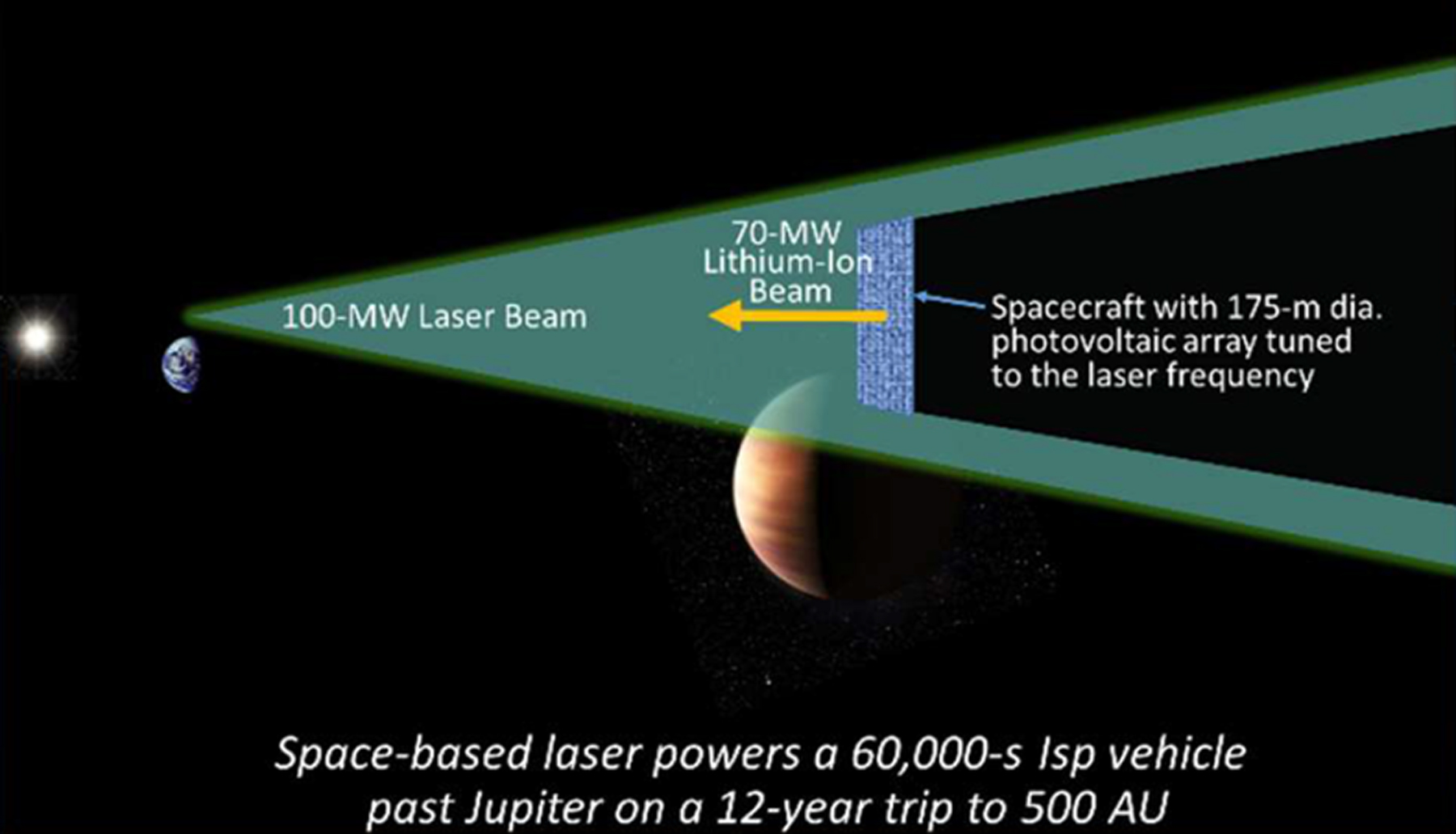John Brophy
NASA Jet Propulsion Laboratory
Description
We propose a new power/propulsion architecture to enable missions such as a 12-yr flight time to 500 AU—the distance at which solar gravity lensing can be used to image exoplanets—with a conventional (i.e., New Horizons sized) spacecraft. This architecture would also enable orbiter missions to Pluto with the same sized spacecraft in just 3.6 years. Significantly, this same architecture could deliver an 80-metric-ton payload to Jupiter orbit in one year, opening the possibility of human missions to Jupiter. These are just a few examples of high-impact missions that simply cannot be performed today due to limitations in current technology. Our architecture accomplishes this by combining the following three innovations:
- A 10-km diameter, 100-MW laser array that beams power across the solar system.
- A 70% efficient photovoltaic array tuned to the laser frequency producing power at 12 kV.
- A 70-MW direct-drive, lithium (not xenon)-based ion propulsion system with a specific impulse of 58,000 s.
The key to the development of any system for rapid space transportation is the ability to process a lot of power level with little dry mass, combined with the ability to provide a very high total spacecraft velocity change (delta-V) without a lot of propellant. These two requirements translate into the need for a very low specific mass (kg/kW) and a very high specific impulse. A specific mass of 0.25 kg/kW is enabled in our architecture by removing the power source and most of the power conversion hardware from the spacecraft and replacing them with a lightweight, photovoltaic array that outputs electric power at the voltage needed to drive a lithium-fueled, gridded ion thruster system at a specific impulse of 58,000 s. For comparison, the state-of-the-art for specific mass and specific impulse, as represented by the Dawn spacecraft, are 300 kg/kW and 3,000 s, respectively.
This architecture provides a breakthrough way to take advantage of very high-power lasers, of the type described by Lubin, to provide fast transportation though out the solar system and beyond for conventionally-sized spacecraft. We take as a given the existence the “Orbital filled 10-km array” from, and assume that its output power has been derated by a factor of a thousand from 100 GW down to 100 MW. Our innovation is the recognition that such an array increases the power density of photons available to a spacecraft illuminated by the laser beam by two orders of magnitude relative to solar insolation at all the solar system distances beyond 5 AU, and that this enormous power can then be used to great effect by driving a highly-advanced ion propulsion system.
A high-voltage photovoltaic array tuned to the laser frequency converts the laser power to electric power at an efficiency of 70% and produces an output voltage of 12 kV. The 12-kV output voltage is used directly to provide the net accelerating voltage for the lithium fueled, gridded ion propulsion system eliminating the heavy, inefficient, power processing hardware, and the associated thermal radiators, typically needed to drive ion propulsion systems. The lithium-fueled, gridded ion propulsion system provides a specific impulse of 58,000 s, roughly 20 times the current state of the art. Lithium stores as a solid, is easily ionized, and very difficult to doubly ionize. This allows the thruster to be operated with nearly 100% ionization of the propellant which effectively eliminates neutral gas leakage from the thruster and the production of charge-exchange ions that are responsible for thruster erosion and current collection on the photovoltaic arrays. This key benefit enables very long thruster life and facilitates the development of the 12-kV photovoltaic array.

































